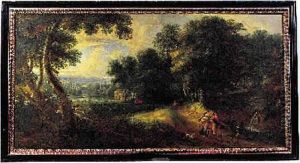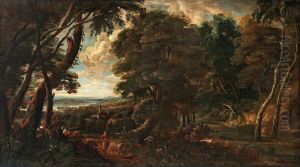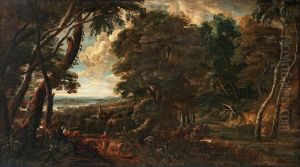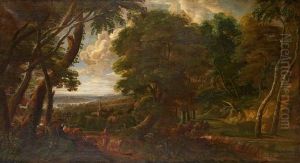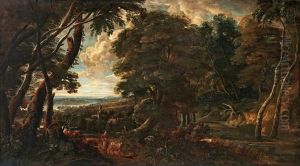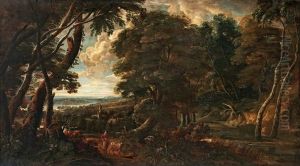Goris De Coxie Paintings
Goris (or Gorius) de Coxie, born in 1514, was a prominent Flemish painter who played a significant role in the development of Northern Renaissance art. His works, deeply influenced by the Italian Renaissance, especially by the styles and techniques of Michelangelo and Raphael, helped in the transition of Flemish art from its medieval traditions to a more modern Renaissance expression. Despite being less widely known than contemporaries such as Pieter Bruegel the Elder, Coxie's contributions to the art world during the 16th century have been considered pivotal in the spread of Renaissance ideas throughout the Low Countries.
De Coxie was born in Mechelen, in the Duchy of Brabant (now in Belgium), and it is believed that he initially trained with his father, before possibly studying under Bernard van Orley, a leading artist of the time who introduced him to the influences of the Italian Renaissance. Coxie's early works indicate a strong grasp of the Italianate style, which was quite innovative for Northern Europe at the time. His ability to blend this with the detailed naturalism traditional to Flemish art set his works apart.
Coxie's travels to Italy, particularly Rome, sometime between 1530 and 1539, profoundly impacted his artistic direction. During his stay, he studied the works of the Italian masters, absorbing their techniques and motifs, which he later adeptly incorporated into his own compositions. Upon returning to the Low Countries, Coxie became a central figure in introducing and disseminating Renaissance styles and ideas. He was dubbed the 'Flemish Raphael' for his adaptations of Raphael's compositions and for the clarity and balance he achieved in his own paintings.
Throughout his career, Coxie worked on numerous commissions for religious and secular patrons, including altarpieces, portraits, and tapestry designs. His works are characterized by their detailed precision, vibrant colors, and the harmonious blend of Italian elegance with Flemish realism. Notably, his contribution to the decoration of the St. Rumbold's Cathedral in Mechelen, including a series of large-scale frescoes, stands as a testament to his skill and artistic vision.
De Coxie's influence extended beyond his own practice through his role as a teacher. He trained several important Flemish artists who would carry forward the Renaissance style. Despite the overshadowing fame of later Flemish artists, Coxie's legacy in bridging the Gothic traditions with the Renaissance's new ideals and techniques marks him as a pivotal figure in the history of Northern European art. Goris de Coxie died in 1591, leaving behind a body of work that continues to be appreciated for its contribution to the Renaissance's spread in the North.
